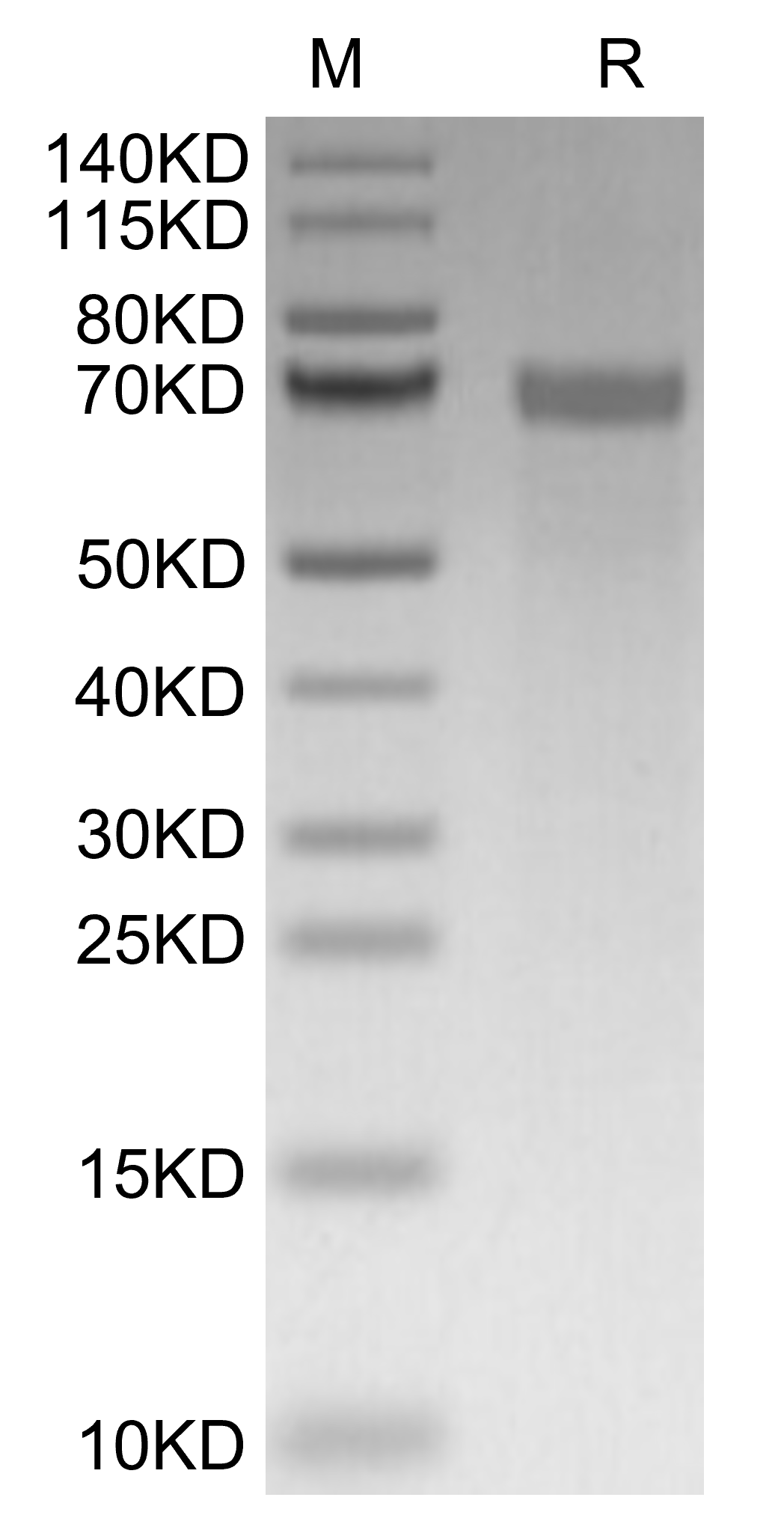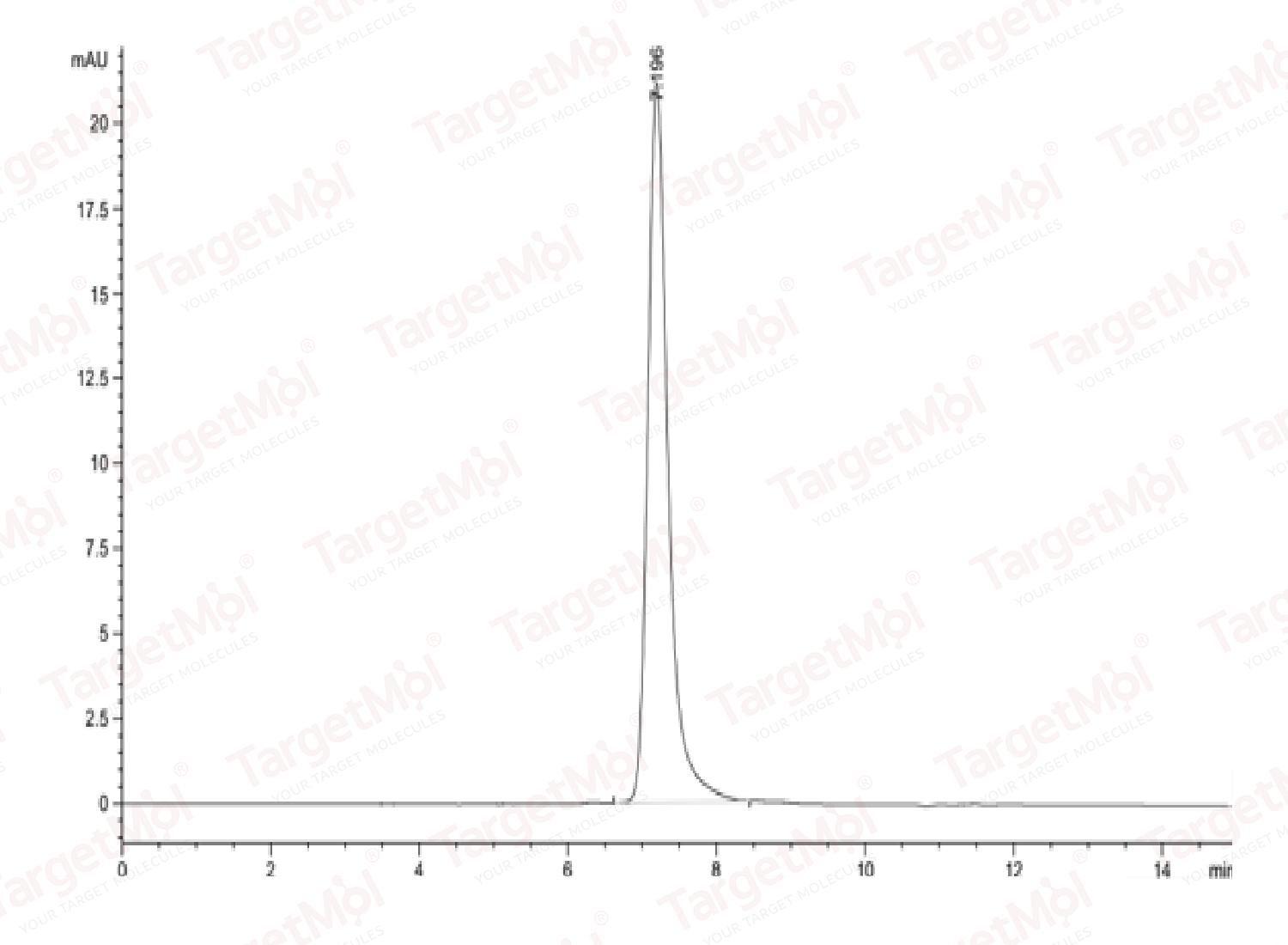- Remove All
 Your shopping cart is currently empty
Your shopping cart is currently empty
Shopping Cart
Tenascin Protein, Human, Recombinant (His)
Catalog No. TMPK-01392
Tenascin-C (TNC) is a hexameric, multimodular extracellular matrix protein with several molecular forms that are created through alternative splicing and protein modifications. It is highly conserved amongst vertebrates, and molecular phylogeny indicates that it evolved before fibronectin. Tenascin-C has many extracellular binding partners, including matrix components, soluble factors and pathogens; it also influences cell phenotype directly through interactions with cell surface receptors. Tenascin Protein, Human, Recombinant (His) is expressed in HEK293 mammalian cells with C-His tag. The predicted molecular weight is 65.27 kDa and the accession number is P24821-1.

Tenascin Protein, Human, Recombinant (His)
Catalog No. TMPK-01392
Tenascin-C (TNC) is a hexameric, multimodular extracellular matrix protein with several molecular forms that are created through alternative splicing and protein modifications. It is highly conserved amongst vertebrates, and molecular phylogeny indicates that it evolved before fibronectin. Tenascin-C has many extracellular binding partners, including matrix components, soluble factors and pathogens; it also influences cell phenotype directly through interactions with cell surface receptors. Tenascin Protein, Human, Recombinant (His) is expressed in HEK293 mammalian cells with C-His tag. The predicted molecular weight is 65.27 kDa and the accession number is P24821-1.
| Pack Size | Price | Availability | Quantity |
|---|---|---|---|
| 100 μg | $418 | In Stock | |
| 500 μg | $1,670 | 7-10 days | |
| 1 mg | $2,800 | 7-10 days |
Bulk & Custom
Add to Cart
Select Batch
Resource Download
Product Information
| Biological Activity | Activity has not been tested. It is theoretically active, but we cannot guarantee it. If you require protein activity, we recommend choosing the eukaryotic expression version first. |
| Description | Tenascin-C (TNC) is a hexameric, multimodular extracellular matrix protein with several molecular forms that are created through alternative splicing and protein modifications. It is highly conserved amongst vertebrates, and molecular phylogeny indicates that it evolved before fibronectin. Tenascin-C has many extracellular binding partners, including matrix components, soluble factors and pathogens; it also influences cell phenotype directly through interactions with cell surface receptors. Tenascin Protein, Human, Recombinant (His) is expressed in HEK293 mammalian cells with C-His tag. The predicted molecular weight is 65.27 kDa and the accession number is P24821-1. |
| Species | Human |
| Expression System | HEK293 Cells |
| Tag | C-His |
| Accession Number | P24821-1 |
| Synonyms | TN-C,TNC,TN,Tenascin-C,Hxb,Hexabrachion |
| Construction | Gly23-Ser621 |
| Protein Purity | > 95% as determined by Tris-Bis PAGE; > 95% as determined by HPLC   |
| Molecular Weight | 65.27 kDa (predicted). Due to glycosylation, the protein migrates to 66-70 kDa based on Tris-Bis PAGE result. |
| Endotoxin | < 1 EU/μg by the LAL method. |
| Formulation | Lyophilized from a solution filtered through a 0.22 μm filter, containing PBS (pH 7.4). Typically, 8% trehalose is incorporated as a protective agent before lyophilization. |
| Reconstitution | Reconstitute the lyophilized protein in distilled water. The product concentration should not be less than 100 μg/ml. Before opening, centrifuge the tube to collect powder at the bottom. After adding the reconstitution buffer, avoid vortexing or pipetting for mixing. |
| Stability & Storage | It is recommended to store recombinant proteins at -20°C to -80°C for future use. Lyophilized powders can be stably stored for over 12 months, while liquid products can be stored for 6-12 months at -80°C. For reconstituted protein solutions, the solution can be stored at -20°C to -80°C for at least 3 months. Please avoid multiple freeze-thaw cycles and store products in aliquots. |
| Shipping | In general, Lyophilized powders are shipping with blue ice. |
| Research Background | Tenascin-C (TNC) is a hexameric, multimodular extracellular matrix protein with several molecular forms that are created through alternative splicing and protein modifications. It is highly conserved amongst vertebrates, and molecular phylogeny indicates that it evolved before fibronectin. Tenascin-C has many extracellular binding partners, including matrix components, soluble factors and pathogens; it also influences cell phenotype directly through interactions with cell surface receptors. |
Dose Conversion
You can also refer to dose conversion for different animals. More
Calculator
Tech Support
Please read the User Guide of Recombinant Proteins for more specific information.

Copyright © 2015-2025 TargetMol Chemicals Inc. All Rights Reserved.


